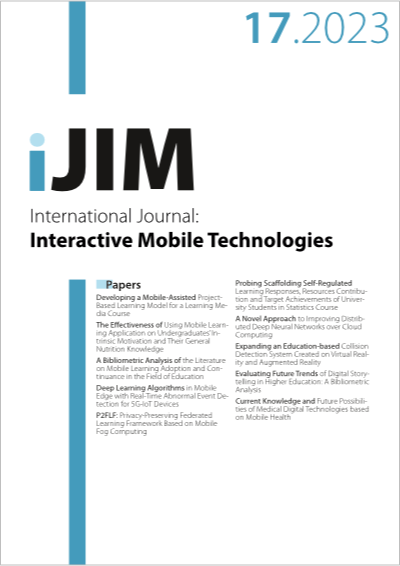Deep Learning Algorithms in Mobile Edge with Real-Time Abnormal Event Detection for 5G-IoT Devices
DOI:
https://doi.org/10.3991/ijim.v17i17.42805Keywords:
localization; navigation; positioning accuracy; 5g; IoT; deep learning; DRCaG; precision;Abstract
IoT is becoming increasingly popular due to its quick expansion and variety of applications. In addition, 5G technology helps with communication and network connectivity. This work integrates C-RAN with IoT networks to provide an experimental 5G testbed. In a 5G IoT environment, this experience is utilized to enhance both perpendicular and flat localization (3D localization). DRCaG, an acronym for the proposed model, stands for a deep, complicated network with a gated layer on top. The performance of the proposed model has been demonstrated through extensive simulations in terms of learning reduction, accuracy, and matrix disorientation, with a variable signal-to-noise ratio (SNR) spanning from 20 dB to + 20 dB, which illustrates the superiority of DRCaG compared to others. An online, end-to-end solution based on deep learning techniques is presented in this study for the fast, precise, reliable, and automatic detection of diverse petty crime types. By detecting tiny crimes like hostility, bag snatching, and vandalism, the suggested system may not only identify unusual passenger behavior like vandalism and accidents but also improve passenger security. The solution performs admirably in a variety of use cases and environmental settings.
Downloads
Published
How to Cite
Issue
Section
License
Copyright (c) 2023 Dr. J. Praveenchandar, Dr. S. Vinoth Kumar, Dr. A. Christopher Paul, Dr. Mukunthan M. A, Dr. K. Maharajan

This work is licensed under a Creative Commons Attribution 4.0 International License.


